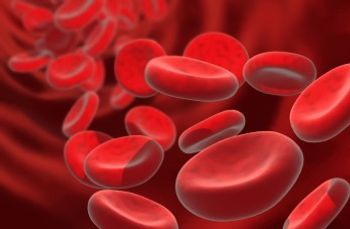
Selecting Optimal Therapy for Acute GVHD
Focusing on pharmacologic options, expert panelists review frontline treatment strategies for patients with acute graft vs host disease.
Episodes in this series

Transcript:
Yi-Bin Chen, MD: Nelson, let’s say this patient received 2 mg/kg per day of prednisone, or if they were admitted and we believed the GI [gastrointestinal] disease was there, then we would give them an IV [intravenous] form of steroids. Steroids are the standard of care. This is an immunological inflammatory disease, we should give steroids to try to stop it. Can you describe for us, why are we trying to improve upon that? What’s the trigger at Duke Cancer Institute to move onto another agent?
Nelson J. Chao, MD, MBA: I will start by saying that we have no idea how steroids work in this setting. We use a lot of steroids obviously, but I’m not sure we have a good idea of what steroids are doing outside of the inflammatory response. Usually, if the patient isn’t better in 3 days, we try to pull the trigger. Or if the patient is getting worse at 3 days, or if they’re not getting better after 7 days, we also pull the trigger. We would try to put the patient in a clinical trial if there was one available. If not, we would use ruxolitinib at this point, which is the approved drug.
Yi-Bin Chen, MD: Is there another center that does things a bit differently than what Nelson described? We would do things fairly similarly at Massachusetts General Hospital. We might add an additional drug for refractory GI disease, such as vedolizumab since we’ve done work with that and we use that, but we generally use a ruxolitinib-based platform for steroid-refractory acute GVHD [graft vs host disease] based on the REACH1 study. Anyone else?
Amin M. Alousi, MD: It’s similar here at MD Anderson Cancer Center. We would, of course, evaluate them for a clinical trial first if they were steroid refractory. Up front, I think it’s important to highlight that at this time steroids are the accepted therapy. There has been 1 published trial alternative to that, and that is the BMT CTN 1501 trial with single-agent sirolimus vs steroids. This study suggests that in a very low-risk population, this regimen could be given as an alternative. It’s important to understand that paper and understand that there was just 1 patient in the sirolimus arm who had diarrhea as a GVHD manifestation, so I wouldn’t apply it to patients who present with diarrhea. There was a very large percentage of patients who had isolated upper GI GVHD with or without a skin rash. In a very low-risk population, maybe something other than steroids could be considered.
Nelson J. Chao, MD, MBA: I’ll say that we would probably add budesonide as well for this patient’s regimen. Although there aren’t a lot of data for that, budesonide might be something that would be used too.
Yi-Bin Chen, MD: I agree. We routinely would use nonabsorbable steroids as well as an adjunct. Let me throw this out there. If the patient responded well to first-line steroids; we all start tapering steroids because we feel that steroids themselves are fairly harmful if used for too long. Say we got down to 30 mg a day of prednisone, you saw the patient, and then you taper them down to 20 mg, but then the rash flared, or maybe their stools got a little looser. Hana, what would you do next there?
Hana F. Safah, MD: That’s an interesting patient population; it depends. If the patient has a small rash over the face, I might give some Prograf [tacrolimus] cream or trimelasin topical cream, or increase the steroid a bit, if it’s a rash only. But if the diarrhea is getting worse and the rash is getting worse every time I decrease the dose, then that’s an indication that I need to change my systemic therapy and add something else. Ruxolitinib is the product that I go ahead and add, based on the REACH1 trial, and based on the approval. I might add it for a certain patient if it’s only the skin; ECP [extracorporeal photopheresis], I might do that, but in general, I add a second-line of systemic therapy.
Amin M. Alousi, MD: The patient you presented sounds like they’re flaring as opposed to being necessarily steroid refractory, so it would not be unacceptable to increase the steroids transiently and then taper it to a slower pace. Certainly, if they keep flaring, that would be another setting where you may try adding one of the agents that was pointed out. It sounded like that patient was flaring as opposed to progressing. No organs were getting worse than previously or new organ involvement.
Yi-Bin Chen, MD: I agree with you. I think the calculus depends on what dose of steroids the patient is on, how fragile they are, and how many toxicities they’ve suffered.
Transcript edited for clarity.
Newsletter
Stay up to date on recent advances in the multidisciplinary approach to cancer.






















































































